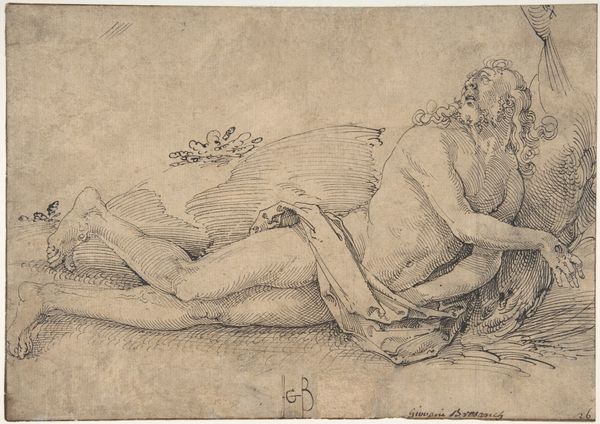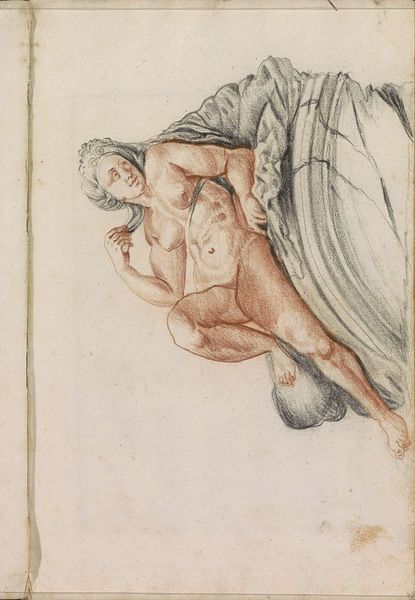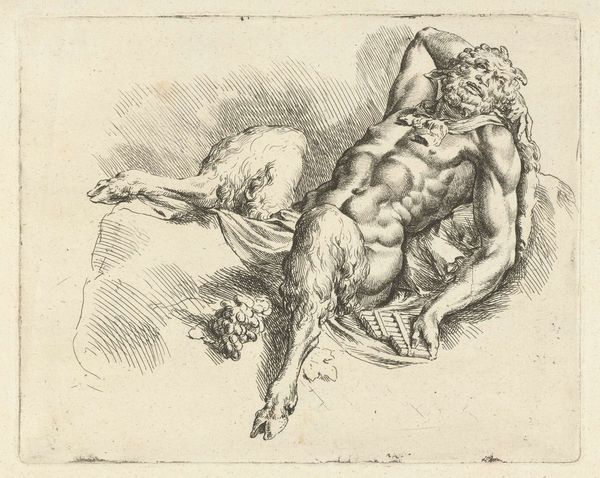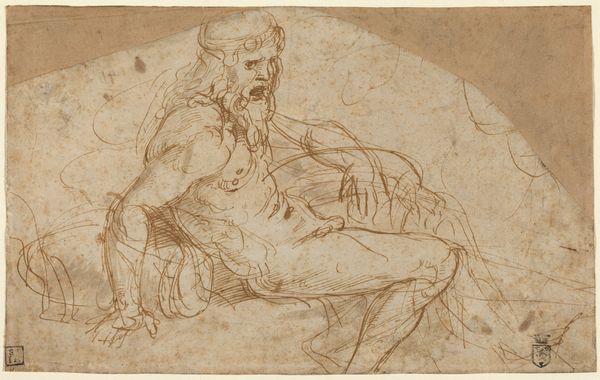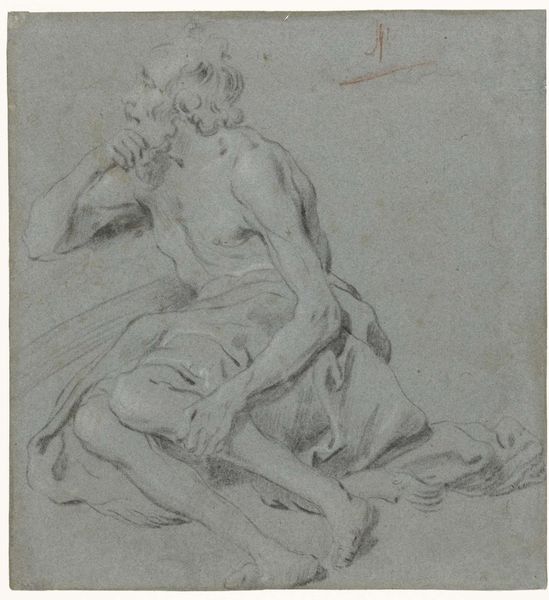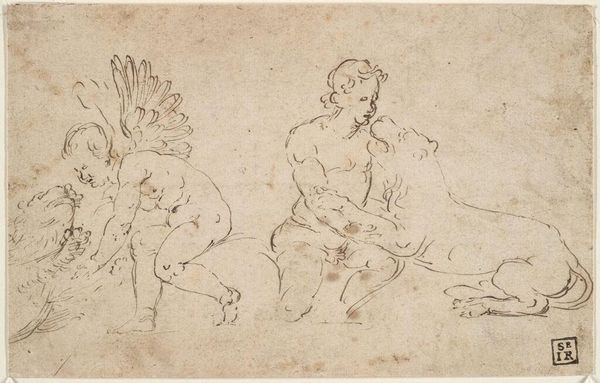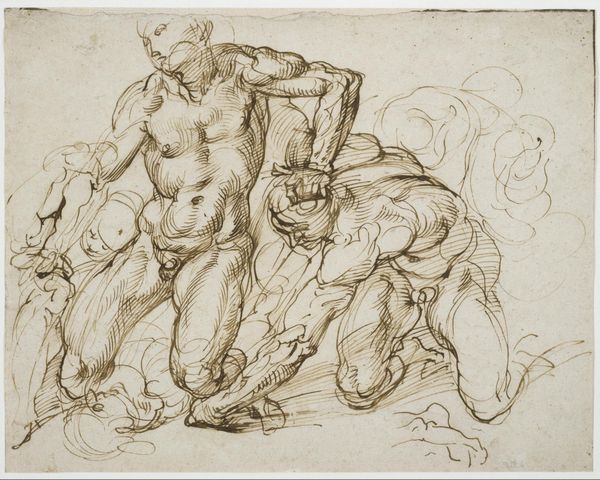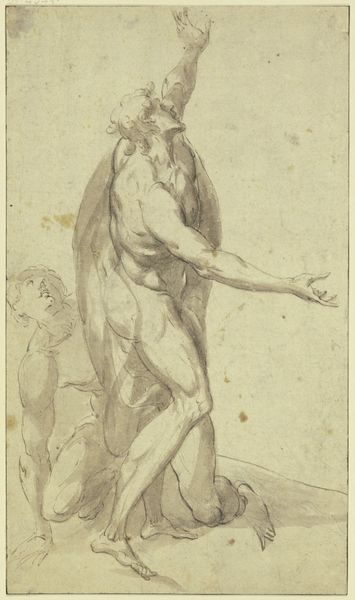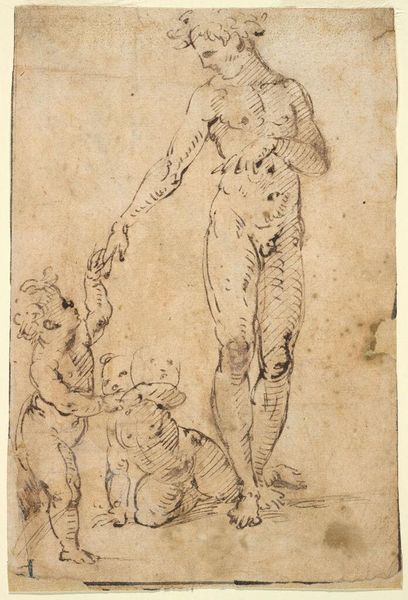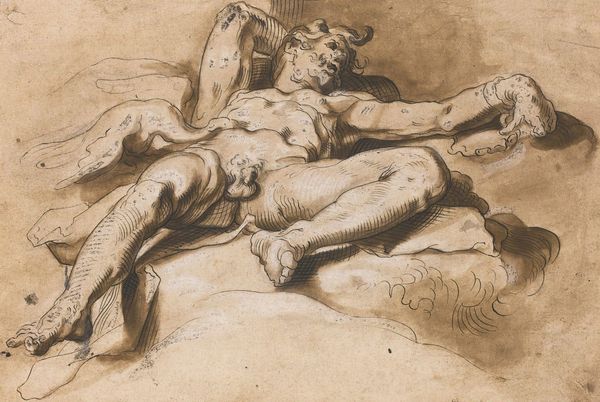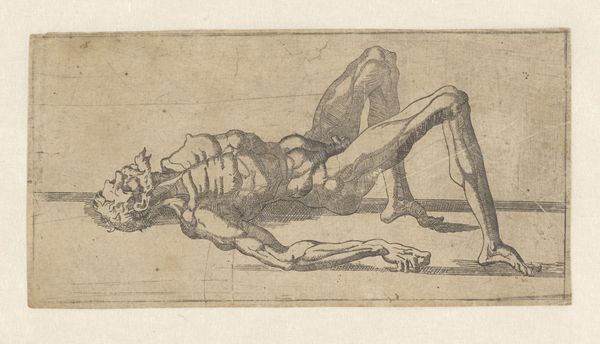
drawing, ink, pencil
#
drawing
#
pencil sketch
#
figuration
#
11_renaissance
#
ink
#
pencil
#
genre-painting
#
history-painting
#
nude
#
watercolor
Dimensions: height 186 mm, width 279 mm
Copyright: Rijks Museum: Open Domain
Curator: Here we have Gerard ter Borch the Elder's "Wrestling Nude Man and Woman," created around 1616. It's a pencil and ink drawing currently held at the Rijksmuseum. The initial impression is quite raw, wouldn't you agree? Editor: Absolutely. There's a certain tension in the sketch, the figures almost seem to be intertwined and struggling, not necessarily with aggression but perhaps with passion or survival. The medium itself, the pencil and ink, lends an immediacy. The paper shows signs of age; I’m curious about its make. Curator: It speaks to the gender dynamics and the portrayal of the male gaze inherent during the time it was created, but that interpretation may impose a contemporary reading onto an early 17th-century artwork. It can be interesting to analyze this encounter using present-day theoretical lenses. Editor: I wonder about the artist's process. Was this a preliminary sketch for a larger painting? Were models involved or did he draw it after something that he had seen, either physically or artistically? What was his intent? And from what source did he acquire his material – pencil, ink and paper. It does show the process of making, like the layering of materials. Curator: His intent is certainly up for debate. It may reflect broader social anxieties about gender roles or the era’s complex attitudes towards the nude. Ter Borch was influenced by mannerism and this is evidenced by elongated limbs and stylized musculature. How much can this inform modern dialogues around power and objectification? Editor: Right, it is interesting to look at Ter Borch as someone from his era dealing with craft as a way of examining societal pressure points. He created form with the material available. Was paper so widely available in the sixteen-hundreds? Where were his works consumed? Curator: His art clearly invites discussions on art-historical approaches. Looking at social anxieties contextualized in modern times we begin to see more current meaning. Editor: Indeed. It's in reflecting on its materiality and production we arrive at such meanings. Thank you.
Comments
No comments
Be the first to comment and join the conversation on the ultimate creative platform.
